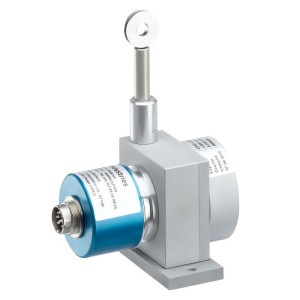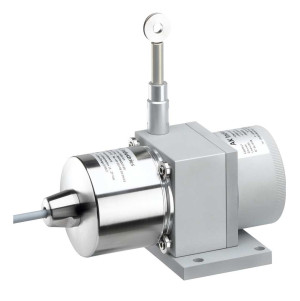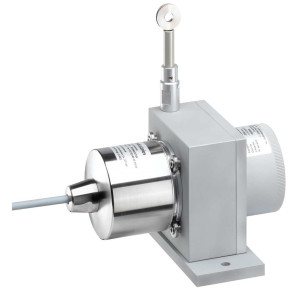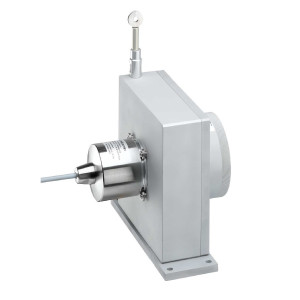String Pots – Incremental Output

Incremental output draw-wire sensor

Incremental output draw-wire sensor

Incremental output draw-wire sensor

Incremental output draw-wire sensor

Incremental output draw-wire sensor
Learn about digital encoder-based sensors, quadrature outputs, and applications requiring precise position tracking and velocity feedback in industrial automation.
Also known as an incremental string encoder, this sensor uses a retractable cable to measure linear displacement and provides a digital, incremental output (typically quadrature A/B signals) that reflects how far and in which direction the cable has moved—similar to rotary incremental encoders.
As the string extends or retracts, it turns an internal rotary encoder. This encoder generates a digital pulse train—each pulse represents a small increment of movement. The frequency and phase of the pulses indicate speed and direction of travel.
Most incremental string potentiometers output quadrature A/B signals, and some may include an index (Z) pulse per revolution. The outputs are typically TTL, HTL, or differential RS-422 for noise immunity and compatibility with industrial controllers.
Incremental sensors offer: High resolution, Precise speed and direction detection, Immunity to analog drift or voltage fluctuations, Real-time motion feedback. They're ideal for systems requiring real-time position tracking or velocity feedback.
The system (e.g., PLC, motion controller, or microcontroller) counts pulses to determine position and direction. However, because incremental encoders don't retain absolute position when powered off, they usually require homing or referencing at startup.
Resolution refers to how many pulses are generated per inch or millimeter of cable movement. Higher resolution = more precise tracking. For example, a 500 PPR encoder with a 1-inch-per-rev drum gives 500 counts/inch. Resolutions from 100 to 10,000+ counts per inch are common, depending on the encoder used.
Most incremental string potentiometers run on 5V or 5–30V DC, depending on the encoder type (TTL vs HTL). Always check the model's datasheet for supply voltage and output compatibility.
Yes. Many models come in rugged, sealed enclosures with IP ratings, corrosion-resistant materials, and extended temperature ranges. They're well-suited for factories, test labs, robotics, and outdoor/mobile equipment.
Incremental string potentiometers are used in: CNC machinery, Robotics and automation, Testing systems, Stage and lift controls, Mobile vehicle systems, Material handling equipment. Basically, anywhere you need precise, directional linear position tracking.
These sensors are typically mounted with screws or brackets to a fixed surface. The string attaches to the moving part. The electrical output connects directly to an encoder input on your controller or data acquisition device.